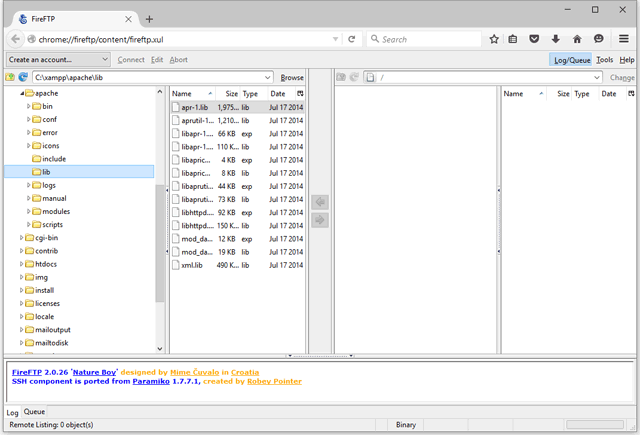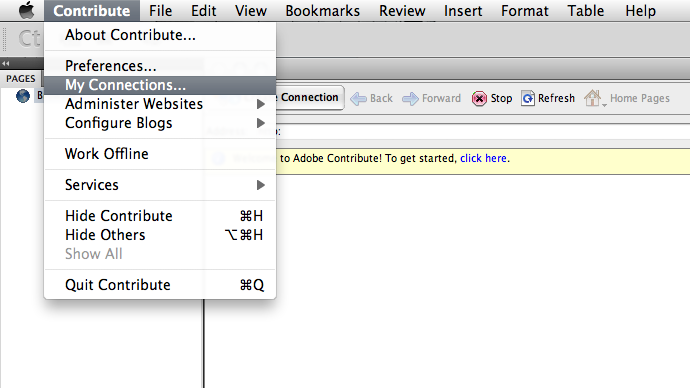- Download for Mac OS X Learn more about Mac FTP software. Also available for Windows. Document Converter Software Doxillion is an easy to use multi-format document.
- Mac OS GoAnywhere MFT is a Managed File Transfer and Secure FTP solution that will automate and secure file transfers with your trading partners, customers and enterprise servers. GoAnywhere MFT installs on Mac OS X, as well as many other operating systems.
- FTP Server lets you run the FTP service on your own computer and you can access the files on the host computer with any standard FTP client such as FileZilla. OS X provides read-only FTP access in Finder, you can press Command-K in a Finder window and enter the FTP URL (something like ftp://192.168.0.100:2121/), and connect to FTP.
- Mac Os Ftp Client Free
- Mac Os Ftp Client Terminal
- Mac Os Ftp Terminal
- Mac Os Ftp Connect
- Mac Os Ftp Command
- Mac Os Ftp
This guide is about the Start an FTP or SFTP Server in Mac OS X. I will try my best so that you understand this guide very well. I hope you all like this guide Start an FTP or SFTP Server in Mac OS X.
Apple support helped me set up this simple app that creates a new FTP server on your computer in High Sierra in a few seconds. Took some setting up on the hardware end of things, but the computer part was simple. It is $2.99 FTP Server on the Mac App Store.

If you’ve visited the Sharing Options panel in newer versions of Mac OS X, you may have noticed that there is no longer a direct option to allow the FTP server to share files and folders. Well, at least there is no obvious option, but the FTP and SFTP server functions still exist, the two have just been divided into different functions, and the newer versions of OS X prefer SFTP over FTP. No matter what you want to use, configuring a server for either of them is very easy, and we’ll go through how to start either an FTP or SFTP server in OS X.
Each of these FTP / SFTP server tricks works on all new versions of OS X, be it OS X Yosemite 10.10.x, Mavericks 10.9, Mountain Lion 10.8, or 10.7 Lion.
Start the FTP server in OS X.
This starts a generic FTP and FTPS server on a Mac, but not an SFTP server:
If you see a familiar FTP login:
Mac Os Ftp Client Free
$ ftp localhostTrying :: 1… Connected to localhost.220 :: 1 FTP server (tnftpd 20210324 + GSSAPI) ready. Name (local host: Paul):
You know the server is running. If you don’t see it, the server either hasn’t started yet or you haven’t typed the command correctly. You can then FTP from other Macs with the same ftp command or by using the Connect to Server option in the Finder.
Enabling an SFTP server in OS X.
Digitech sound cards & media devices driver download for windows 10. As you probably know, FTP is unencrypted and as a result failed for security reasons. Enabling SFTP is actually easier than FTP on a Mac:
- Start System Preferences and go to “Sharing”
- Click the Remote Login check box to enable SSH and SFTP
Update: Our much more detailed guide on remote login and SSH server is here.
To make sure SFTP works, type this at the command prompt:
sftp localhost
entry: FTP and SFTP servers are different, and it is not possible to enable one. SFTP is recommended because of the default encryption layer and secure transmission.
Disable the FTP or SFTP server in OS X.
To disable the FTP server: sudo -s launchctl unload -w /System/Library/LaunchDaemons/ftp.plist
As the command suggests, this unpacks the ftp service and shuts down the server. The FTP server can only be shut down and disabled if it is initially enabled.
Disabling SFTP is only an option in the “Remote Login” box in the Sharing Options panel in OS X.
If you’re wondering how all this differs from previous versions of OS X, you’ll need to look for Snow Leopard (10.6) or before. Previously, the FTP server option was a switch in the general sharing settings panels like this:
While it’s not entirely clear why Apple pulled an easy interface to FTP sharing, it’s possible that they will simply choose to prefer SFTP because it is a more secure protocol, and by enabling it, you will enable both. Nevertheless, FTP and FTPS servers are still close (as well as customers in this case), so it is simply the use of the terminal enabling server-side issues. In general, however, because SFTP is much more secure, you should use it for remote file transfers and connections, so keep this in mind if you plan to host any kind of server to the outside world or even if you just want to transfer a protected file to and from Macs.
This is a tip given by Daniel Land through TUAW that explains how to start ftpd automatically on reboot, so if you’re interested in it, don’t miss their message.
Benefits: Start an FTP or SFTP Server in Mac OS X
- The Start an FTP or SFTP Server in Mac OS X guide is free to read.
- We help many internet users follow up with interest in a convenient manner.
- The price of the Start an FTP or SFTP Server in Mac OS X guide is free.
FAQ: Start an FTP or SFTP Server in Mac OS X
Guide about Start an FTP or SFTP Server in Mac OS X
How this Guide helping you?
What are the supported devices for this guide?

Mac Os Ftp Client Terminal
What are the supported Operating system?
Mac Os Ftp Terminal
Mac Os Ftp Connect
Final note: Start an FTP or SFTP Server in Mac OS X
Mac Os Ftp Command

Mac Os Ftp
If you have any queries regards the Start an FTP or SFTP Server in Mac OS X, then please ask us through the comment section below or directly contact us.
Education: This guide or tutorial is just for educational purposes.
Misinformation: If you want to correct any misinformation about the guide “Start an FTP or SFTP Server in Mac OS X”, then kindly contact us.
Want to add an alternate method: If anyone wants to add more methods to the guide Start an FTP or SFTP Server in Mac OS X, then kindly contact us.
Our Contact: Kindly use our contact page regards any help.

Comments are closed.